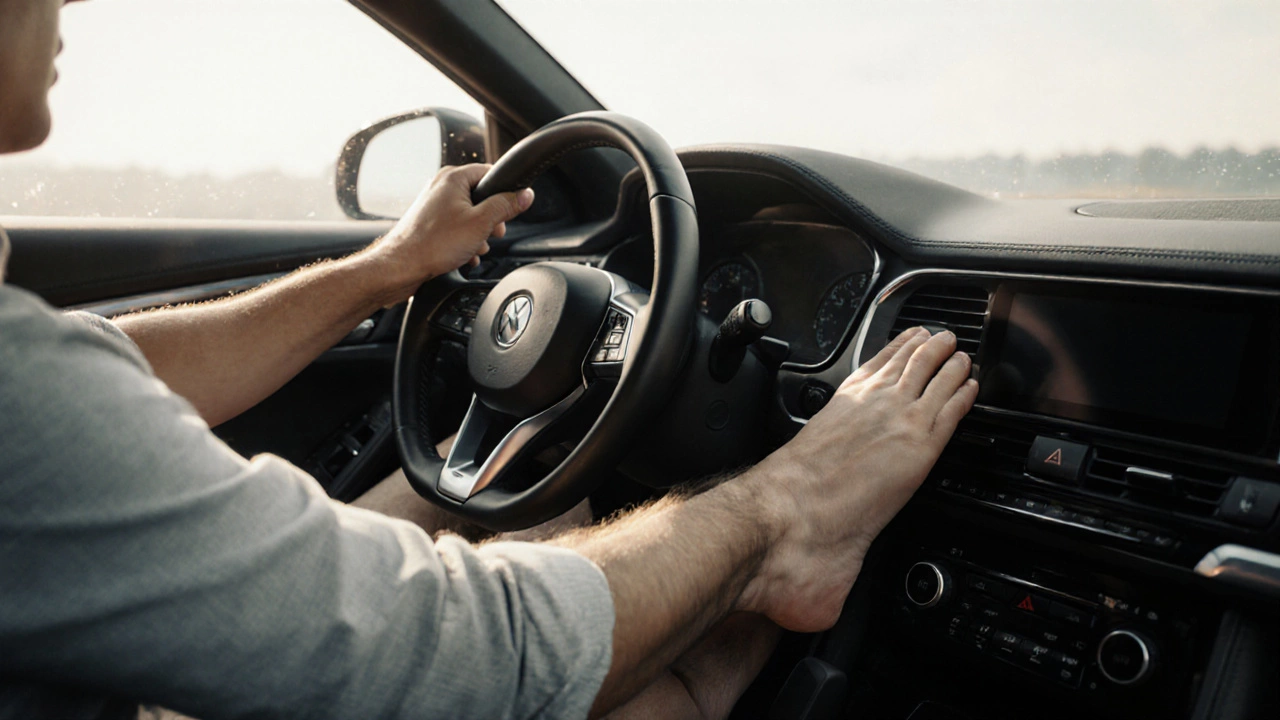Automatic Driving Tips: How to Master Smooth Shifts and Control in HGVs
When you drive an automatic HGV, a heavy goods vehicle with an automatic transmission that shifts gears without a clutch pedal. Also known as automatic truck, it’s becoming more common on UK roads thanks to improved technology and driver demand for comfort and safety. Unlike manual lorries, automatics remove the stress of clutch control and gear timing—but they don’t make driving easier if you don’t understand how they work. Many drivers assume automatic means effortless, but that’s not true. You still need to know when to brake, how to manage momentum on hills, and how to avoid jerky starts that can damage cargo or unsettle other road users.
Driving an automatic transmission, a system in vehicles that changes gears automatically without driver input. Also known as auto gearbox, it requires a different mindset. You’re not just letting the machine do the work—you’re guiding it. For example, if you’re approaching a roundabout at 30 mph, the transmission might hold gear too long, causing the engine to strain. A light lift off the accelerator before the turn tells the system you’re slowing down, and it downshifts smoothly. This isn’t guesswork; it’s learned behavior. The same goes for descending hills. In a manual, you’d select a lower gear to use engine braking. In an automatic, you need to switch to manual mode (if available) or use the gear selector’s + and - buttons to lock in a lower range. Skipping this step can overheat your brakes and lead to failure.
Another key point: weight matters. An empty automatic HGV behaves very differently from one carrying 44 tonnes. The transmission adapts, but not always fast enough. If you’re accelerating hard from a stop with a full load, the gearbox might delay shifting up, causing unnecessary engine revs. The trick? Apply steady, even pressure—not full throttle. Let the system find its rhythm. Also, watch your speed on motorways. Many automatic HGVs have a top speed limit set by the manufacturer to protect the transmission. Pushing beyond it doesn’t make you faster—it just wears out parts faster.
And don’t forget the basics: mirror checks, signal timing, and anticipation. Automatic doesn’t mean you can zone out. In fact, you need to be more aware. With no clutch to feel, you lose tactile feedback. You can’t tell if the engine is struggling until it’s too late. That’s why smooth driving starts with your eyes—not your feet. Look ahead. Plan your moves. Anticipate traffic. If you see a red light 200 metres away, start easing off early. Let the automatic do its job instead of waiting until the last second to brake.
There’s also a big difference between automatic transmissions in cars versus HGVs. HGV auto boxes are designed for heavy loads and long hauls. They’re not just "clutchless manuals." They use complex algorithms to match torque, speed, and gradient. That’s why training matters. Some drivers switch from manual to automatic without proper instruction and end up damaging the gearbox by riding the brake or shifting at the wrong time.
What you’ll find in the posts below are real-world tips from drivers who’ve been there. You’ll see how to handle automatic lorries in rain, how to avoid stalling on inclines, why some drivers swear by certain routes for practice, and what to do if your transmission starts acting up. No theory. No fluff. Just what works on UK roads, with real loads, real weather, and real deadlines.
- November 8 2025
- 0 Comments
- Rowan Cavendish
Do You Use Both Feet When Driving an Automatic Car?
Learn why using both feet when driving an automatic car is risky, what experts recommend instead, and how switching to right-foot-only braking improves safety and reduces wear on your vehicle.
- Driving Lessons (41)
- HGV Training (31)
- Driving Test Tips (31)
- Driving Test Booking (26)
- Driving Licence Renewal (23)
- Driving Theory Test (21)
- Intensive Driving Course (16)
- Pass Plus Course (15)
- Driving Tips (15)
- Driver Licensing (14)
Categories
- December 2025 (13)
- November 2025 (13)
- October 2025 (21)
- September 2025 (5)
- August 2025 (8)
- July 2025 (30)
- June 2025 (30)
- May 2025 (30)
- April 2025 (31)
- March 2025 (30)
- February 2025 (28)
- January 2025 (34)
Archives
- driving lessons
- driving test
- driving tips
- intensive driving course
- driving test tips
- HGV training
- learn to drive
- driving theory test
- driver training
- driving test booking
- pass driving test
- HGV driving
- road safety
- driving license renewal
- Virginia driving test
- learner drivers
- safe driving
- Virginia driver's license
- driving license
- learning to drive

